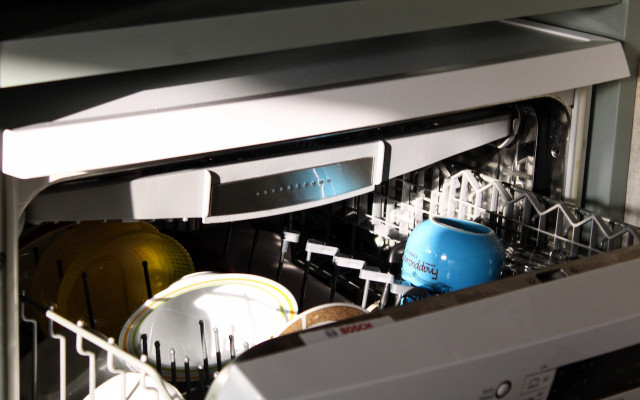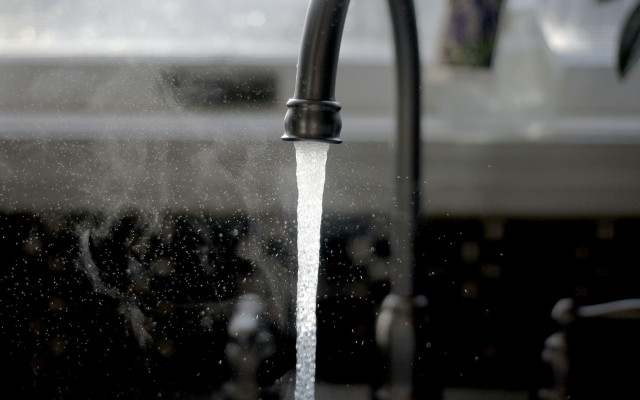When the dishwasher is clogged, it can feel like a minor catastrophe. But there’s no need to panic if your dishwasher water isn’t draining. We’ll share our best tips to unclog your dishwasher.
There are a few different reasons why your dishes aren’t getting clean, or your dishwasher suddenly stops pumping water:
- the drain hose is blocked
- the strainers are clogged
- the machine is calcified
Read on to find out how to unclog your dishwasher in five easy steps.
Unclog Your Dishwasher in 5 Simple Steps

If your dishwasher is clogged, there are a few things you can do:
- If the dishwater is not draining, clear out the dishes and rinse them off immediately.
- Search for the cause by checking the strainers first. If they’re clogged, unscrew them and clean them thoroughly under clean water. Try to do this regularly to prevent future clogging.
- Not the strainers? Check the drain pump filter next. The drain pump is responsible for pumping out the water completely after a wash cycle is finished, so it will be located somewhere at the bottom of your dishwasher. To do this, carefully reach into the pump impeller and see if it is clogged.
- If the dishwasher is still unclogged, take a closer look at the wastewater hose on the back of the machine. Turn off your water, detach the hose from the machine and hold it over a bucket, so the dirty water flows out. Check to see if anything is blocking the hose.
- In rare cases, the problem is with the siphon or the sewer pipe. In this case, we advise you to consult an expert.
How To Prevent a Clogged Dishwasher
If you don’t want to keep having to unclog your dishwasher, there are a few things you can do to take preventative action. Regular cleaning goes a long way to ensure your household appliances continue to function properly for a long time.
- The easiest way to prevent a clogged dishwasher is to scrape stubborn food residue off the dishes before loading them in.
- Clean your strainer and other delicate parts every two weeks using dish soap and a bit of water. You can even learn how to make your own dish soap here.
- Occasionally run a cycle without dishes or with a dishwasher cleaner.
- Run a hot water cycle without dishes between every fifth and tenth wash to remove hardened grease and prevent your dishwasher from becoming clogged.
Dishwashers Have a Better Eco-balance Than Hand Washing



Unclogging the dishwasher is a pain, but having one in your home can be a great way to support the environment. Dishwashers have a better eco-balance than hand-washing dishes, but it’s important to remember that this is only true if you use your dishwasher correctly.
- Save energy and water right from the start by loading the dishwasher correctly and running full loads. Also, certain things belong on top and some at the bottom of the dishwasher. For more tips on loading your dishwasher correctly, check out our guide on how to load your dishwasher the right way.
- Sharp knives, pieces of wood, milk and crystal glass, pots, and pans should always be washed by hand.
- Skip the pre-rinse, as it consumes unnecessary energy. If you have extremely dirty dishes, rinse them briefly under running water before loading them in the dishwasher.
- To protect the environment, wash lightly soiled dishes at low temperatures using an economy or short program.
- Be careful to use the right amount of detergent and rinse aid.
- Switch your appliance off when not in use. Don’t let it sit on the power-guzzling standby mode.
Do you like this post?







